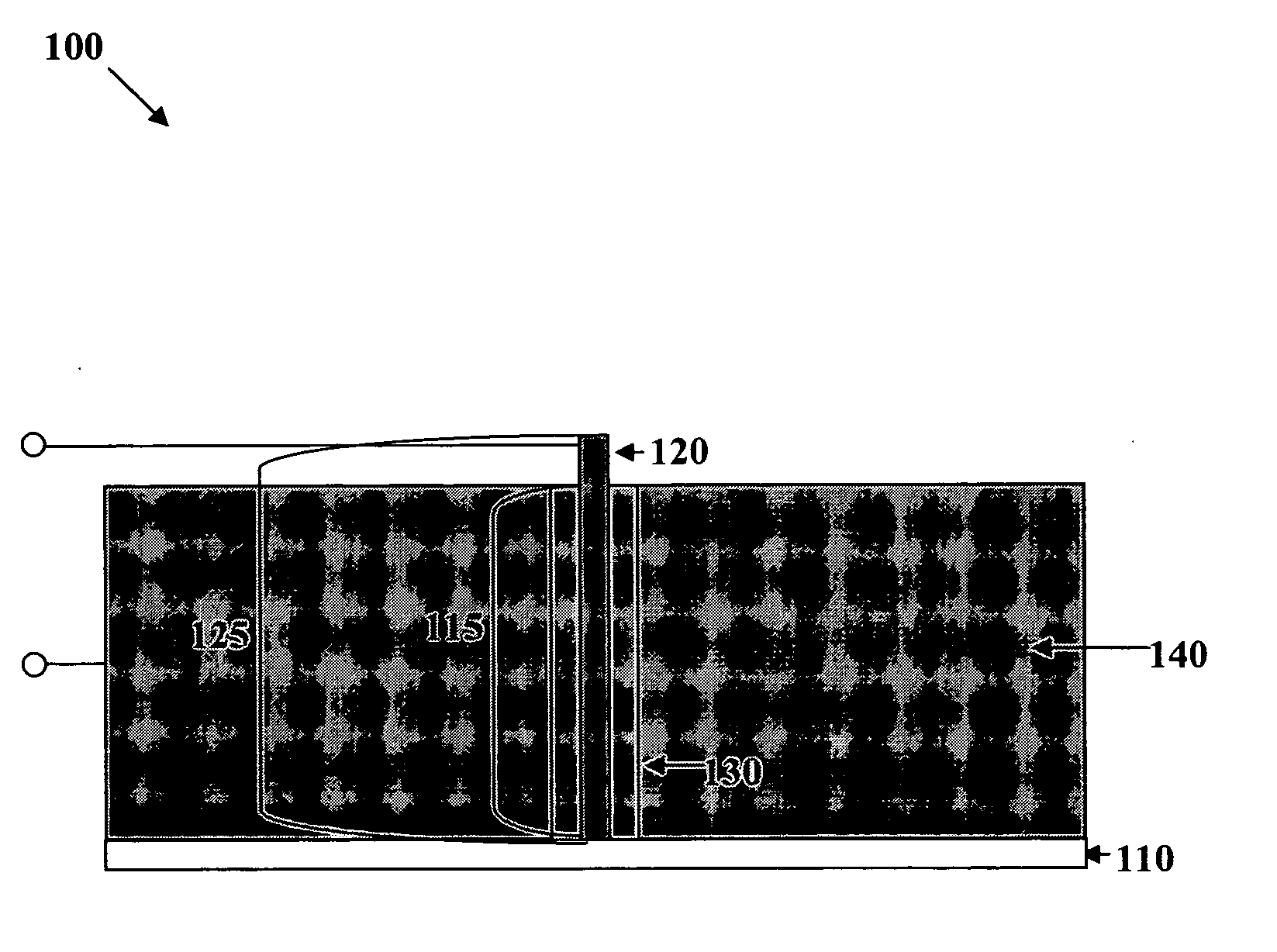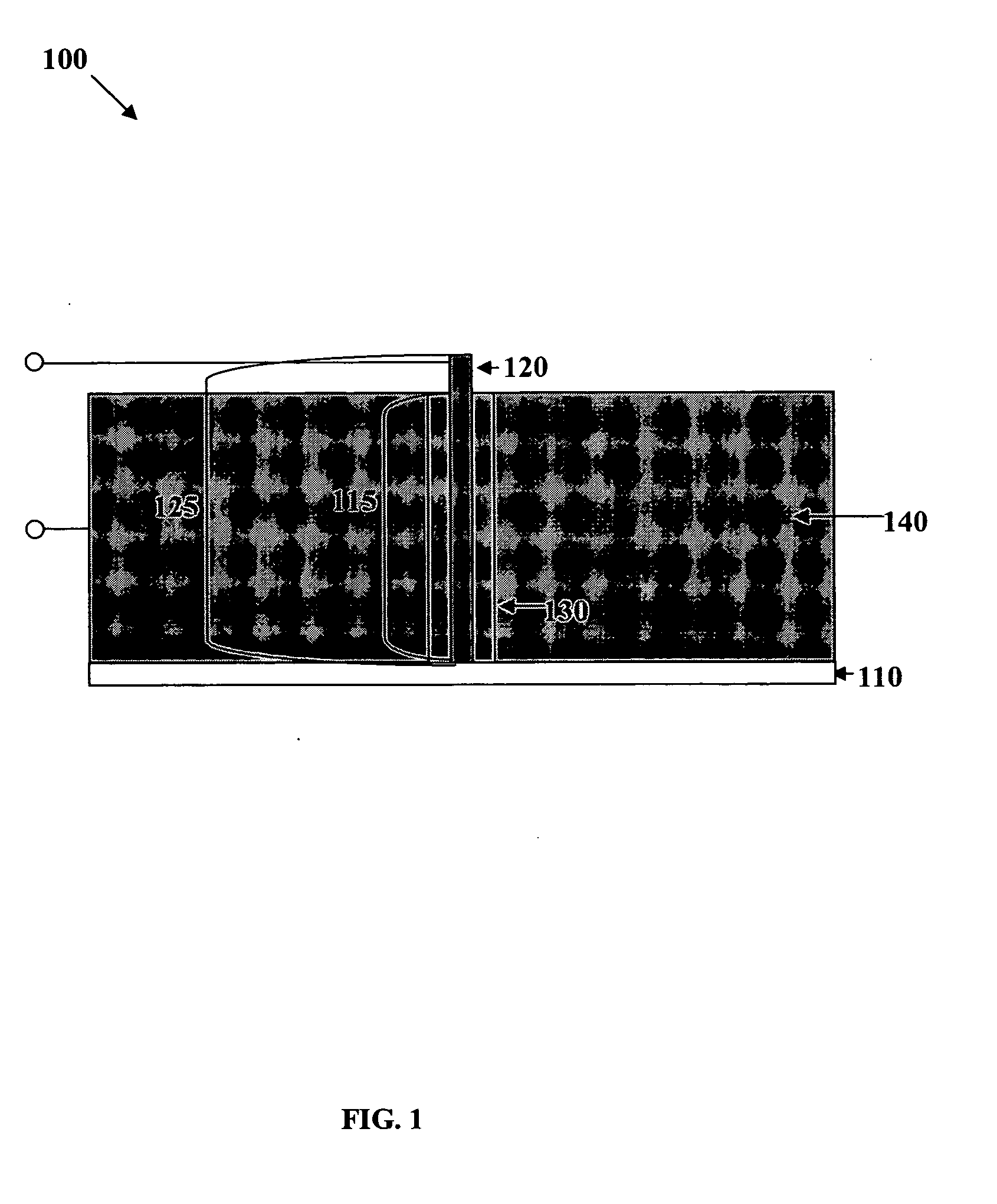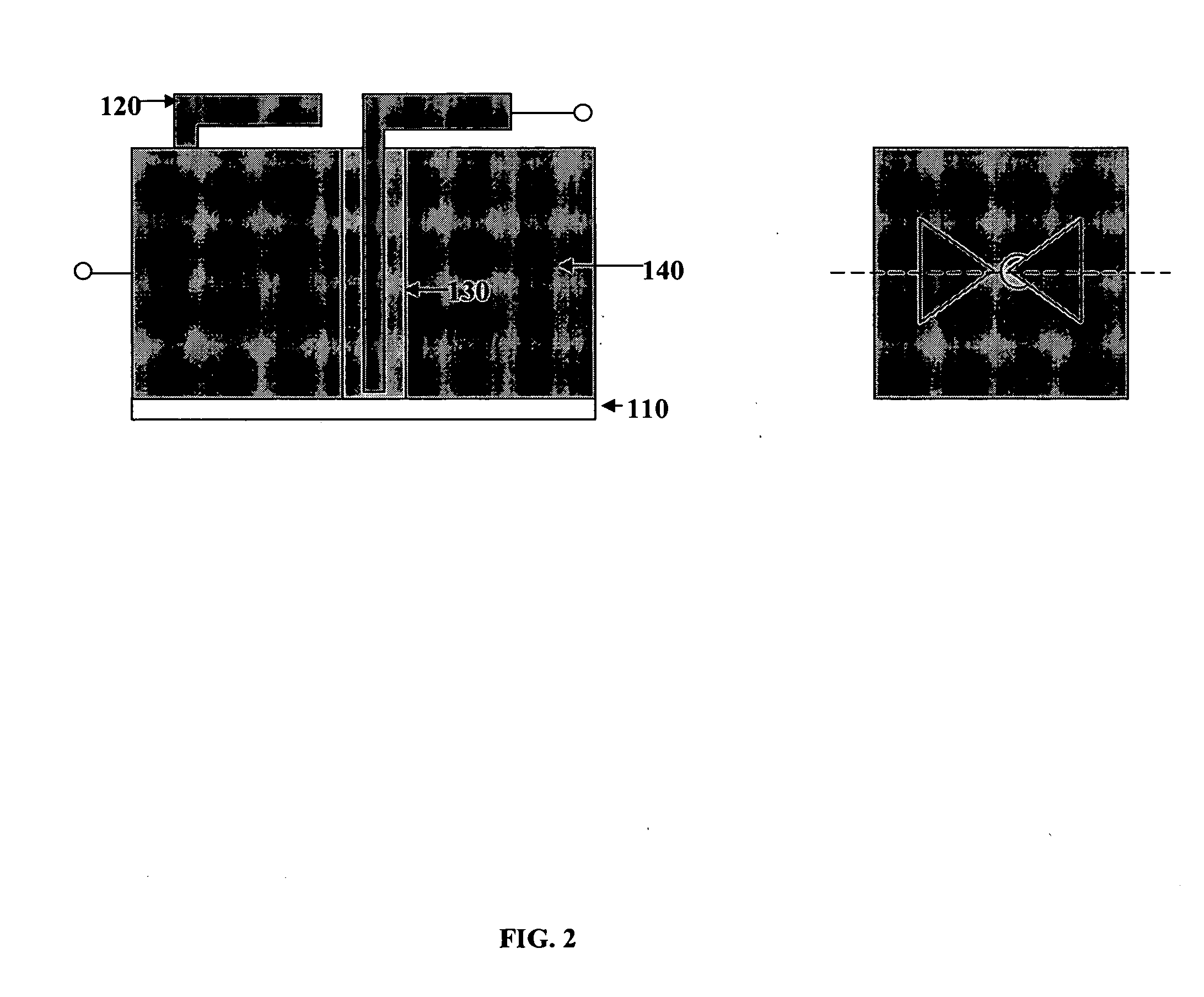Solar cells using arrays of optical rectennas
a solar cell and array technology, applied in the direction of semiconductor devices, electrical devices, nanotechnology, etc., can solve the problem that no substantial progress in practice has been reported
- Summary
- Abstract
- Description
- Claims
- Application Information
AI Technical Summary
Problems solved by technology
Method used
Image
Examples
example 1
[0063] With this example, optical measurements of random arrays of aligned carbon nanotubes are disclosed, and show that the response is consistent with conventional radio antenna theory. The example first demonstrates the polarization effect, the suppression of the reflected signal when the electric field of the incoming radiation is polarized perpendicular to the nanotube axis. Next, the example demonstrates the interference colors of the reflected light from an array, and show that they result from the length matching antenna effect. This antenna effect could be used in a variety of optoelectronic devices, including THz and IR detectors.
[0064] In recent years, periodic and random arrays of multi-walled carbon nanotubes (MWCNTs) have been synthesized on various substrates, by the plasma-enhanced chemical vapor deposition (PECVD) process. Each nanotube in such arrays is a metallic rod of about 50 nm in diameter and about 200 to about 1000 nm in length. Therefore, one can view inte...
PUM
 Login to View More
Login to View More Abstract
Description
Claims
Application Information
 Login to View More
Login to View More - R&D
- Intellectual Property
- Life Sciences
- Materials
- Tech Scout
- Unparalleled Data Quality
- Higher Quality Content
- 60% Fewer Hallucinations
Browse by: Latest US Patents, China's latest patents, Technical Efficacy Thesaurus, Application Domain, Technology Topic, Popular Technical Reports.
© 2025 PatSnap. All rights reserved.Legal|Privacy policy|Modern Slavery Act Transparency Statement|Sitemap|About US| Contact US: help@patsnap.com



